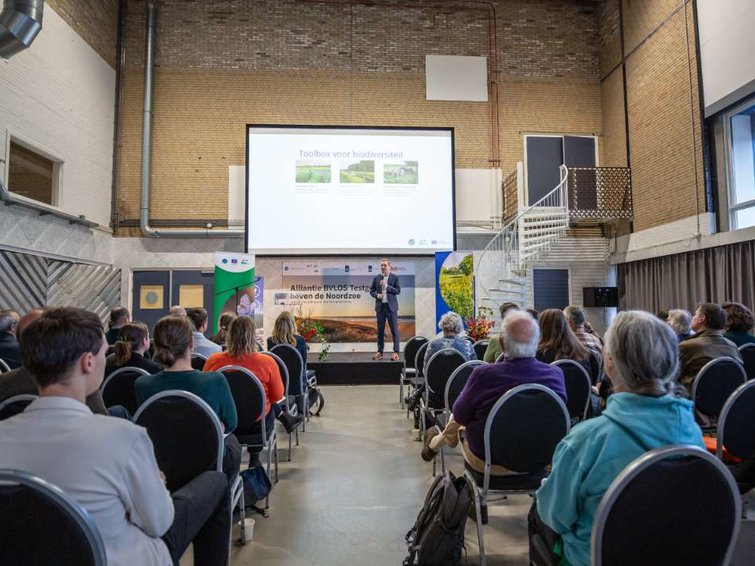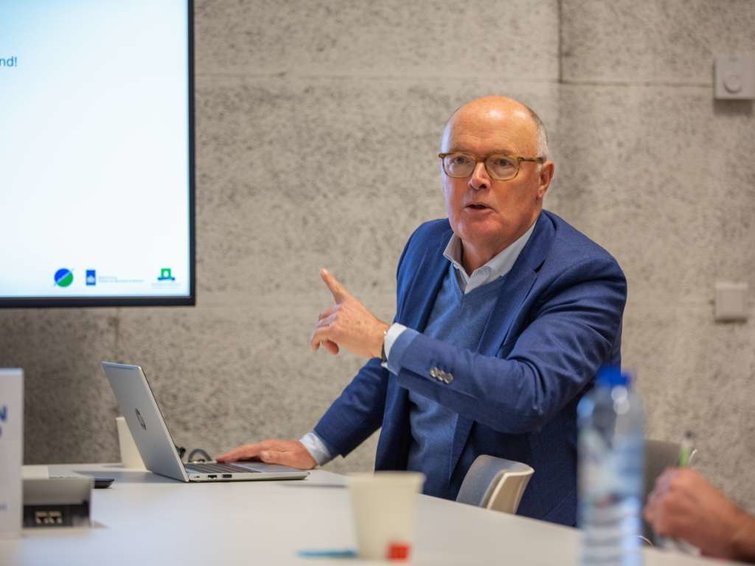LIFE IP FARM LIFE – Agroforestry as a path to sustainable farming

Photocredits: Pixabay
On November 14th, the webinar ‘Collaboration with farmers – Uniting viable farming practices with nature conservation’, organised by LIFE IP All4Biodiversity and the Delta Plan for Biodiversity Restoration, took place. Seventy interested people joined the international webinar to learn more about this specific topic. Several LIFE IP programmes shared their findings in their search to improve nature quality in and around Natura2000 areas and beyond, whilst providing a viable and practical business model for farmers. Below you can read the report on the presentation about FARM LIFE.
Euridice Leyequien Abarca, working at Van Hall Larenstein University of Applied Sciences, presented the FARM LIFE project, highlighting the benefits and challenges of agroforestry and its role in supporting farmers’ transitions to sustainable practices.
Introduction to FARM LIFE
Euridice Leyequien Abarca began by emphasising the project’s focus: helping farmers transition to agroforestry systems, where trees and shrubs are integrated into agricultural practices. This six-year project, launched in 2018, brought together a dynamic consortium of farmers and foresters, research institutes, food concept innovators and agroforestry advisors. Key collaborators included pioneer farms such as De Koekoek and Kwaalburgse Hoeve, Boeckel Bosbouw, Boefkik, the ILVO research institute in Flanders, Forestry Service Group and Van Hall Larenstein University of Applied Sciences.
Agroforestry, while relatively “new” in the Netherlands, has been practiced in Europe for centuries. Initially met with scepticism, it has gained traction over the past decade, with nearly 1600 Dutch farmers incorporating agroforestry by 2024. That is 3% of Dutch farmers utilise agroforestry, with an ambition to expand to 25,000 hectares by 2030, and additionally 1,000 hectares of food forests.
Economic viability of agroforestry
A central challenge for farmers adopting agroforestry is the business model. Euridice Leyequien Abarca explained that while the environmental benefits are clear, profitability remains a critical concern for farmers. FARM LIFE demonstrated that agroforestry can indeed be financially viable compared to monocultures (this is also shown by graphs in her presentation-sheets). Key findings include:
-
Increased productivity: Mixed farming systems incorporating trees saw an average productivity increase of 30% compared to monoculture systems.
-
Income growth: Farmers reported an average additional income of €540 per hectare per year.
-
Break-even point: A cost-benefit analysis showed that the financial break-even could occur between 8–9 years, demonstrating the long-term profitability of agroforestry.
-
Long-term gains: Over 20 years, the average financial return increased by 17%.
Environmental Benefits
Agroforestry not only supports farmers financially but also reduces their environmental footprint. FARM LIFE’s analyses revealed significant resource savings:
-
20% reduction in water use.
-
15% reduction in fossil fuel consumption.
-
15% reduction in fertilizer use.
These benefits stem from the integration of trees and shrubs, which help close nutrient cycles and improve soil health. Of course, these percentages depend on how agroforestry is implemented: which trees and shrubs, but also how many, and so on.
Supporting farmers
The project supported both pioneer farmers and those transitioning to agroforestry. Pioneer farmers, often driven by intrinsic motivation, served as examples for others. FARM LIFE developed a toolkit and launched a knowledge hub, the Agroforestry Network Netherlands, to provide practical guidance for making the transition to agroforestry. During the project, several key challenges were addressed and solutions offered:
-
Rules and regulations: Spatial planning restrictions often limit where trees can be planted. FARM LIFE worked to facilitate regulatory changes to enable agroforestry in suitable areas.
-
Market development: A key question for farmers was whether a market exists for agroforestry products like walnuts or hazelnuts. FARM LIFE developed food concepts and marketing for agroforestry products. The project also created a label to market agroforestry products, connecting farmers to consumers through value.
-
Education and research: FARM LIFE emphasized the importance of knowledge sharing through education, research and training. By addressing knowledge gaps, the project aimed to scale up agroforestry practices. FARM LIFE also created an agroforestry online course and an agroforestry specialisation offered by Van Hall Larenstein University of Applied Sciences.
Question: What are the criteria to become an agroforestry-farmer?
Answer by Euridice Leyequien Abarca: “Agroforestry is really about multifunctional systems: combining agriculture with trees. It’s more than orchards; examples include chickens grazing under trees or intercropping annual crops with perennials.”
Question: How do you guide farmers starting agroforestry?
Answer by Euridice Leyequien Abarca: “That’s a very relevant question. Farmers are advised to check spatial plans due to regulated planning in the Netherlands. FARM LIFE also works on facilitating policy changes to make agroforestry implementation easier, but there are certainly areas where it is just not allowed to plant trees. So, the first thing we ask farmers is to check these plans.”
To conclude, FARM LIFE illustrates the transformative potential of agroforestry in creating sustainable farming systems. By combining financial incentives with environmental benefits, the project provides a pathway for farmers to contribute to biodiversity and climate goals while maintaining profitability. As Euridice Leyequien Abarca concluded, “A transition takes time at every level—farm, landscape, and governance. But with the right tools and collaboration, it’s possible to achieve.”
Check out the other reports and presentations of this webinar








